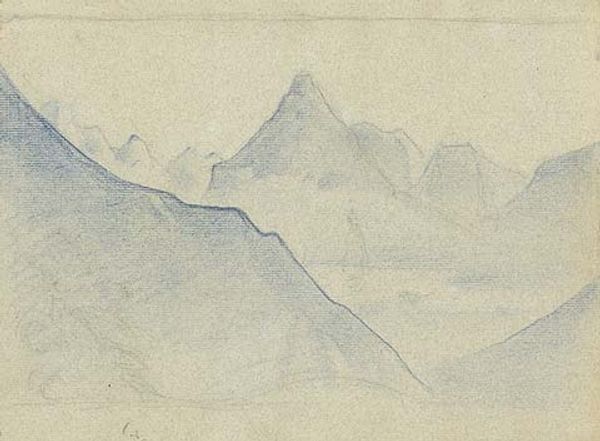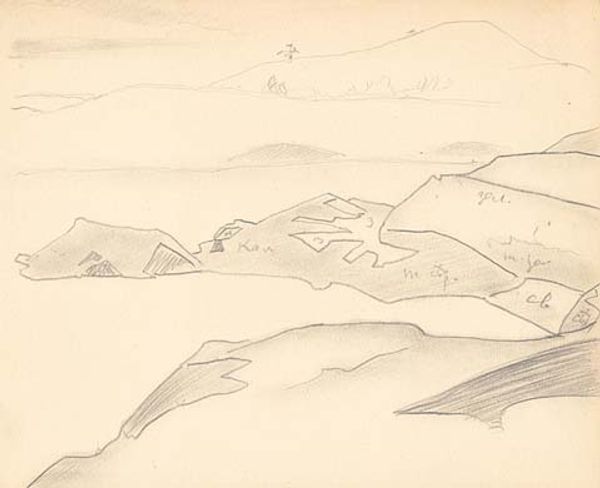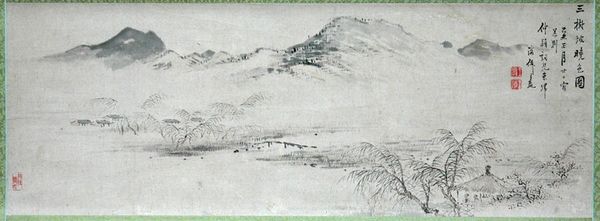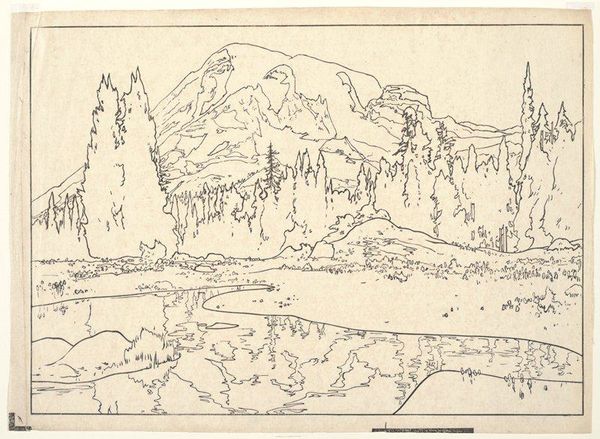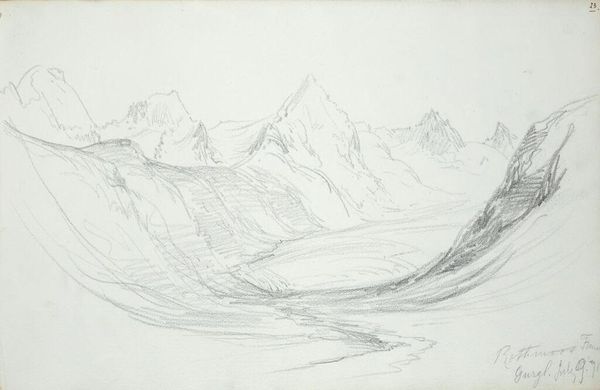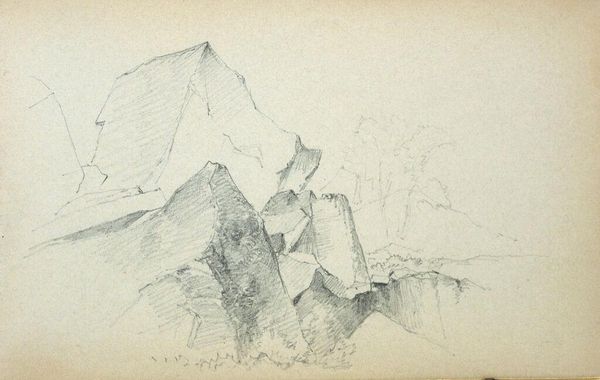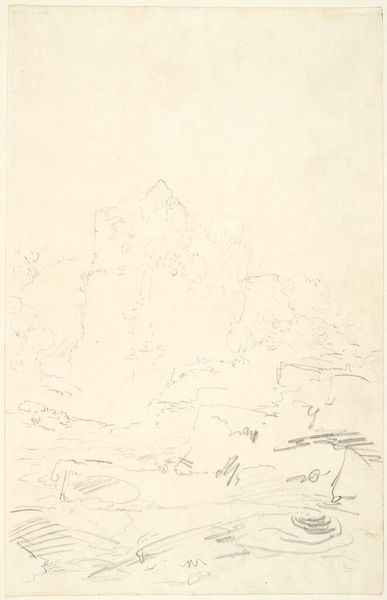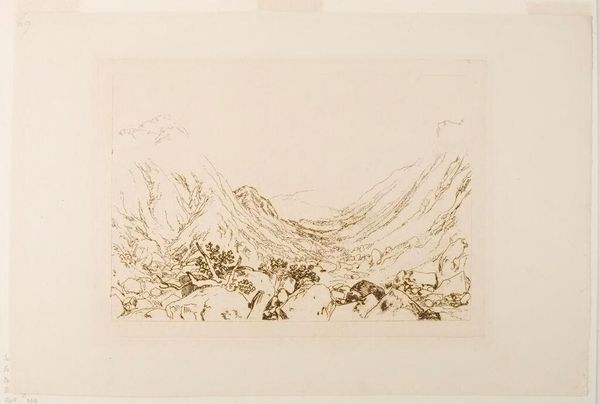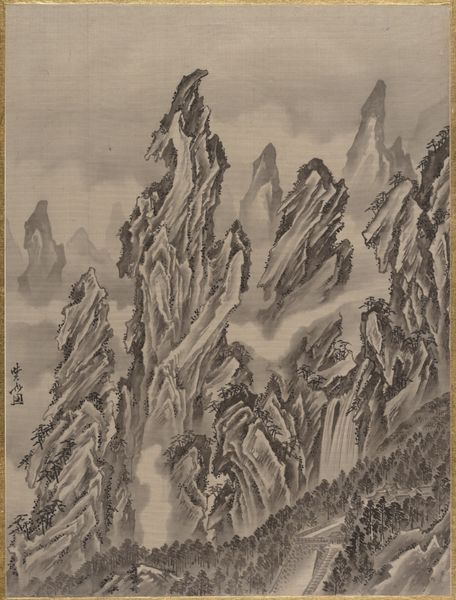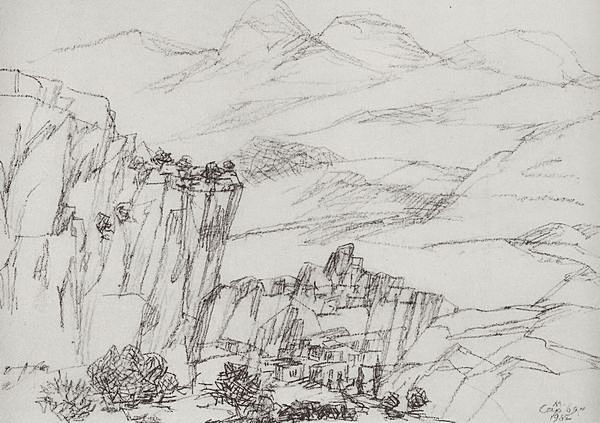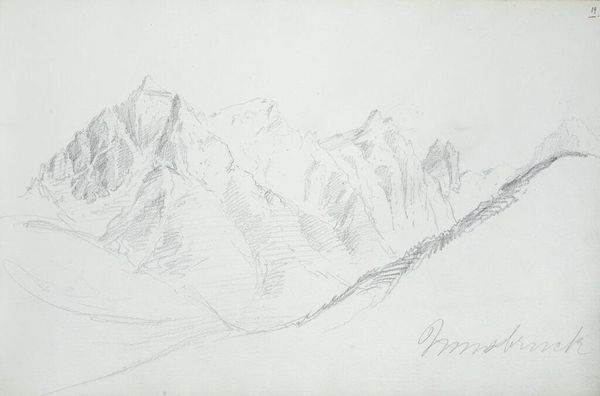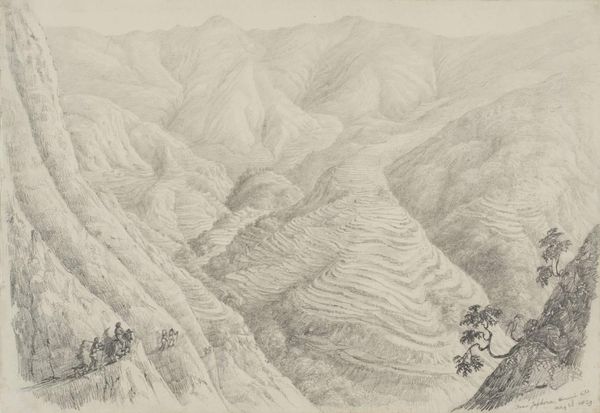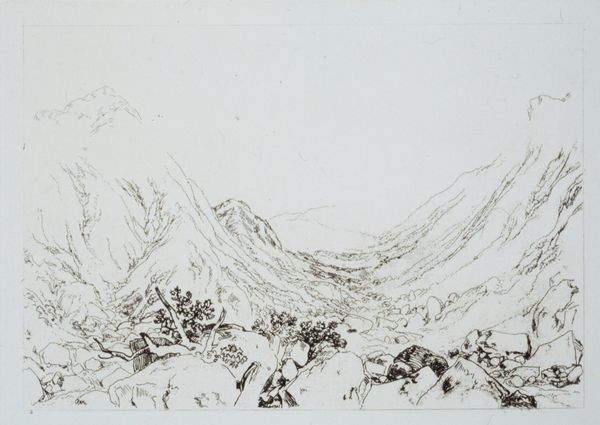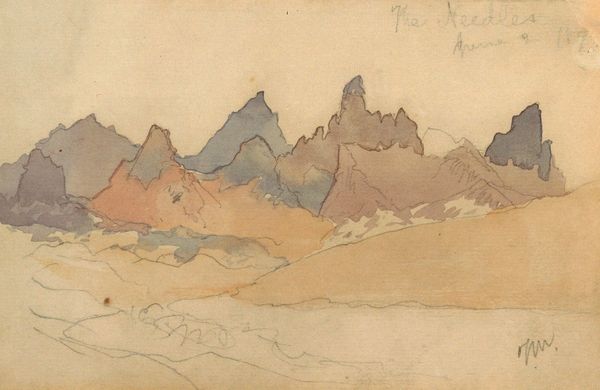
drawing, pencil
#
drawing
#
quirky sketch
#
asian-art
#
incomplete sketchy
#
landscape
#
figuration
#
personal sketchbook
#
idea generation sketch
#
sketchwork
#
pencil
#
rough sketch
#
sketchbook drawing
#
sketchbook art
#
fantasy sketch
#
initial sketch
Copyright: Public domain
Curator: Before us is a pencil drawing titled "Padmasambhava," created by Nicholas Roerich. It's rendered in what appears to be a sketchbook style. Editor: It feels so unfinished, like a fleeting thought captured on paper. I’m immediately drawn to the figures huddled together, seemingly dwarfed by this imposing mountainous landscape. It makes me think of vulnerability and seeking solace. Curator: Indeed. Roerich was deeply influenced by the spiritual traditions of the East, and Padmasambhava is a pivotal figure in Tibetan Buddhism, credited with introducing Buddhism to Tibet. He is often depicted amidst mountainous landscapes, embodying a bridge between the earthly and the transcendent. Editor: Given Roerich's well-documented esoteric beliefs and fascination with the East, I can’t help but think about the colonial gaze at play here. Was he truly engaging with these cultural narratives respectfully, or was he exoticizing them? The rough sketch style, though perhaps unintentional, kind of feeds into a trope of the “mystical East” portrayed through a Western lens. Curator: I appreciate that critical perspective. And I do think it's important to address the complexities of representation. Roerich's work often invokes a sense of longing for a lost spiritual connection. The unfinished quality might even serve to mirror our fragmented understanding of ancient cultures and beliefs. Editor: That's a generous reading. To me, this sketch underscores how Roerich, as a Westerner, could only ever grasp an impression, a shadow, of Padmasambhava's true significance. The sketchy landscape too, might reflect how Western fantasies can obscure lived realities and genuine knowledge. Curator: Perhaps that ambiguity is precisely the point. Rather than providing concrete answers, the drawing becomes a starting point for dialogue, inviting us to reflect on our own relationship to spiritual traditions and cross-cultural exchange. The jagged peaks and wispy clouds act as metaphors for the obstacles encountered on a spiritual journey. Editor: So much of Roerich's work reflects this idealist, almost utopian bent that fails to consider the uneven power dynamics inherent in the interactions between East and West. But in its own way it opens conversations about whose narratives get to take up space. Curator: Yes. It makes me reconsider how symbols evolve over time and can accrue sometimes contradictory associations. Editor: Agreed. Art acts like a mirror to cultural desires and anxieties, it reflects more than any artist ever intends.
Comments
No comments
Be the first to comment and join the conversation on the ultimate creative platform.
